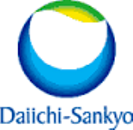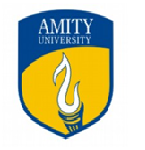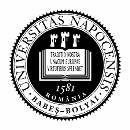Day 2 :
- Pre-Clinical and Clinical Trials
Clinical Trials on Drugs used in Various Disorders, Pharmacotherapy and Pharmacotherapeutics
Adverse Drug Reactions
Good Pharmacovigilance Practice and Pharmacoepidemiology
Session Introduction
Michelle Perry
Aspen Pharmacare Trading Limited
Ireland
Title: Combining quantitative and qualitative methods in signal detection and evaluation in pharmacovigilance

Biography:
Michelle Perry has completed her MPhil at the age of 25 from the University of Portsmouth in collaboration with the Drug Safety Research Unit, Southampton. She also has a BSc (Hons) in Applied Pharmacology from Queen Margaret University, Edinburgh and is currently a Pharmacovigilance Associate at Aspen Pharmacare Trading Limited, based in Dublin, Ireland.
Abstract:
Adverse drug reactions (ADRs) for medicinal products can be identified through post-marketing studies by methods of signal detection. Traditional, qualitative methods for signal detection involve clinical review of cases. Modern, quantitative methods help surveillance of the large number of medicinal products on the market. This research aimed to investigate combining traditional and modern methods of signal detection by adding statistical weighting to adverse event terms identified pre-marketing as requiring further monitoring post-marketing to improve identification and evaluation of ADRs. The therapeutic area diabetes mellitus and anti-diabetic drugs currently marketed was chosen to model the concept. Review of pre-marketing information for safety concerns highlighted two medical concepts: Cardiac failure and acute pancreatitis. Weightings were established, based on ratings provided by eleven physicians through a Delphi study to identify and prioritise terms to add statistical weight to. Weightings were applied to two datasets, both from the Yellow Card Scheme in the UK: a two-year dataset (2005-2007) and a ten-year dataset (2000-2010). In the two-year dataset oedema peripheral became a potential signal one month earlier for pioglitazone and two months earlier for rosiglitazone. In the ten-year dataset, oedema peripheral was reported 22 times with pioglitazone but was not considered a signal in the original data. With the weighting applied it became a potential signal for further review. No true signals were missed using this weighting method. Oedema peripheral is now listed warning and precaution for glitazones. Incorporating traditional, qualitative review of pre-marketing information with quantitative, signal detection methodology may improve pharmacovigilance
Subodh Bhardwaj
Arable Corporation
USA
Title: Vaccine Vigilance- Towards strengthening Pharmacovigilance

Biography:
Dr Subodh Bhardwaj is a qualified Physician and Clinical pharmacologist with 3 decades of experience in the pharmaceutical Industry leading research and development of Vaccines and Biopharmaceuticals . Qualified MBBS from Medical College Jammu, India in 1981 and worked in Internal Medicine for 7 years, before qualifying MD Pharmacology from the prestigious AMU in India in 1990. He was associated with research on Hypertension, diabetes and trace elements till 1993. He joined as Medical Director of Serum Institute of India in 1993- the largest exporter of Vaccines globally and conducted research on Bacterial & Viral Vaccines- licensing DTPwHB, HB, Hib, DTPwHB Hib, MMR, MR, R, HDC Rabies Vaccines, Infertility drugs, Somatostatin, Somatropin & Onco BCG for Superficial Bladder Cancer as adjunctive therapy. His experience blends special skills in Pharmacovigilance of drugs & pharmaceuticals across broad therapeutic groups including Monoclonals for rabies. He has managed Pharmacovigilance, as Director Medical, Regulatory & Public Policy of Sanofi Pasteur India from 2008-2011 when notable products licensed were- Acellular Pentavalent IPV containing Vaccines, Pandemic and Seasonal Influenza Vaccines, Boosters, Yellow fever vaccine, Meningococcal vaccines among others. Well versed with Marketing and distribution of anticancers, Biologicals in Uganda as Director Medical Affairs Surgipharm Uganda & Rwanda from 2013-2015. Leading Clinical research & Pharmacovigilance in Vaccines& Pharma- he has organized large sample size trials from Preclinical to licensure and Post Marketing Surveillance in India and abroad. He is Member of BRAPP, European Society of Pharmacovigilance, with 60 National & International publications in reputed journals. He currently works as Biopharmaceutical Consultant & Vice President Arable Corporation besides consulting for International organizations on topics of Public health importance.
Abstract:
Vaccines pharmacovigilance is of utmost importance and necessary today, as millions of subjects are being immunized globally in the platinum Era of Vaccines with the introduction of 13 new Vaccines in this century . New Vaccines with safety profiles emanating from Clinical trials on a small sample size, would need active monitoring globally- to assess newer reactions post-licensure. Vaccines differ from drugs as they are preventive while drugs are curative. Vaccine related adverse events are immunologic and indicate immune response while drug reactions are undesirable effects. This has bearing on prevention, analysis , intervention and data interpretation. The vigilance gap between developed and developing countries needs to be improved. As Newer Vaccines are produced using sophisticated technologies, with novel adjuvants and unique routes of administration ( nasal)for LAIV, new challenges emerge for adverse events detection, analysis and management. This workshop aims to provide better insights , discuss methods for AE detection and management with real time case reports on rare adverse events; to commonly administered Bacterial and Viral vaccines. To make the researchers and managers be better prepared to manage AEs as per international guidelines. In conclusion, Vaccine Vigilance is the need of the hour as children are an extremely sensitive young group receiving up to 37 shots from birth to 6years. Clearly Vaccine safety has a narrow margin for error.
Tomasz ZÄ…bkowski
Military Medical Institute
Poland
Title: Evaluation of the clinical indications, adverse drug reactions, and finasteride use in patients with benign prostatic hyperplasia in Poland

Biography:
Tomasz ZÄ…bkowski has obtained a Doctor’s Diploma in Medicine, Faculty of Medicine, Military Medical University in Lodz in 1991, a Diploma of First Grade of Specialization in Surgery, Military Medical University in Warsaw in 1994, a Diploma of Doctor of Philosophy in Medicine in 1995 and a Diploma of Second Grade of Specialization in Urology in 1997. He is the adjunct professor in Urology Department, Military Institute of Medicine in Warsaw. He has published more than 102 papers in polish journals and 12 papers in reputed journals and has been serving as an Editorial Board Member of Pharmacist’s Journal in Warsaw.
Abstract:
Benign prostatic hyperplasia (LUTS/BPH) is one of the most common urinary disorders in elderly men. Over the recent years, the number of surgical interventions performed in pharmacotherapy has significantly reduced because of the increased efficacy of conservative therapy, including combination treatment mostly with 2 groups of drugs, namely, alpha-1-adrenolitics and other 5-alpha-reductase blockers, with a different pharmacological activity. The aim of this study was to evaluate the clinical indications, adverse drug reactions, and finasteride use in patients with diagnosed BPH in Poland. We conducted a clinical trial from November 2009 to November 2010 that included 5751 patients who were enrolled in 46 urological centers in Poland. The researchers who conducted the clinical trial were urologists from different regions of Poland. The clinical trial involved 6 follow-up visits. The mean age of the patients was 67 years (range, 45–93 years; median, 67.00; SD, 8.507). The inclusion criteria were as follows: LUTSs, finasteride therapy for at least 2 weeks, age >40 years, and BPH. Patients self-reported data on LUTSs, the symptom frequency, concurrent diseases, and intensification of urinary system symptoms. In addition, additional examinations were performed, including prostate-specific antigen test, urinary tract ultrasonography with evaluation of residual urine and prostate, and uroflowmetry. The study did not exclude data on the combined treatment with finasteride and alpha-1-adrenolitics. Finasteride was demonstrated to be effective, as evidenced by the significant decrease in TPV by 40% even after 12 months, and improvement in maximum flow rate, decrease in nocturia, and improvement in QoL.
Sagar D Kadam
Hon. Shri Babanrao Pachpute Vichardhara Trust’s Group of Institutions
India
Title: ADR is a threat more to children and women than adult male

Biography:
Mr. Sagar D. Kadam has published a book on Biodiesel from Waste Cooking Oil: A Potential Alternative Fuel in Lambert Academic Publication, Germany and he is also Working as a International Reviewer member of American Journal of Advanced Drug Delivery. He is having 15 International Papers in reputed Journals. He is an approved Post Graduate & Graduate teacher From Savitribai Phule Pune University. He Received funding of 1.5 Lakhs for the project of ‘‘DEVELOPMENT AND EVALUATION OF FLOATING DRUG DELIVERY SYSTEM BY NOVEL APPROACHES” under BCUD Department of Savitribai Phule Pune University.
Abstract:
Adverse drug reactions in children are an important public health problem. We have undertaken a systematic review of observational studies in children in three settings: Causing admission to hospital, occurring during hospital stay and occurring in the community. Up to 5% of all hospital admissions are the result of adverse drug reactions (ADRs). Identifying those factors which may predispose to ADRs is essential for risk management. Amongst the known risk factors for adverse reactions are increasing age, polypharmacy, liver and renal disease as well as being female. Female patients have a 1.5- to 1.7-fold greater risk of developing an ADR, including adverse skin reactions, compared with male patients. The reasons for this increased risk are not entirely clear but include gender-related differences in pharmacokinetic, immunological and hormonal factors as well as differences in the use of medications by women compared with men.Women generally have a lower lean body mass, a reduced hepatic clearance, have differences in activity of cytochrome P450 (CYP) enzymes (40% increase in CYP3A4, varied decrease in CYP2D6, CYP2C19 and CYP1A2), and metabolize drugs at different rates compared with men. Other important factors include conjugation, absorption, protein binding and renal elimination, which may all have some gender-based differences. However, how these differences result in an increased risk of ADRs is not clear. There are pharmacodynamic differences between men and women, seen particularly with cardiac and psychotropic medications. There is no doubt that chlorpromazine, fluspirilene and various antipsychotics appear more effective in women than men for the same dosage and plasma concentration. It is possible that gender difference in T cell activation and proliferation account for this as well as the increased prevalence of skin diseases such as systemic lupus erythematosus and photosensitivity. Whatever the mechanism(s), it is important to be aware that gender is a significant factor in ADRs. We were particularly interested in understanding how ADRs might be better detected, assessed and avoided in these categories.
Kazuo Yano
Tokyo Women’s Medical University
Japan
Title: The regulation of allogeneic human cells and tissue products as biomaterials

Biography:
Kazuo Yano received his PhD from Cooperative Graduate School of Tokyo Women's Medical University and Waseda University. He is working as a part time Assistant Professor at both Universities. He has published 14 papers in journal and has been an international member of ISO 14155 (Global GCP Standard of Medical Device).
Abstract:
The current definition of biomaterials differs vastly from it of just a decade ago. With advanced new technology and the scope in the domain of healthcare, it encompasses unpredictable materials such as engineered human cell and tissue. These biomaterials also have to be approved to use in healthcare business by regulatory authority, which are defined as drug, medical devices, or biologics in the regulation. The pathways of seven approved allogeneic human cells and tissue products for market authorization in the United States were four in PMA, one in HDE and two in BLA until March 2012. Six allogeneic human cells and tissue products derived from neonatal or infant fibroblasts and/or keratinocytes were approved as medical devices or biologics as well as hematopoietic progenitor cells of cord blood. For five of seven human cells and tissue products, well-controlled comparative clinical trials were conducted as pre-approval evaluation followed by post-approval evaluation. Although these products avoid a sterilization process usually used for medical devices, no serious malfunction that would lead to class 1 recall was reported. After premarket approval (PMA), any PMA holder has to PMA supplement that meets any change that affects or enhances the safety and effectiveness of the medical devices. Since allogeneic cell sources would enable to produce large-scale lots of products having well-controlled quality with lots of products, they can establish business model that brings profits. In the future, it is widely expected that various kinds of allogeneic human cells and tissue products would be on market.
Pramod Wable
Daiichi Sankyo Development Ltd
UK
Title: Lean Six Sigma and Its applications in Clinical Trials/Research

Biography:
Pramod Wable is Manager, QA GCP/GLP at Daiichi Sankyo Development, Gerrards Cross, UK. He has been working in clinical quality assurance for past 8 years. Pramod holds a Bachelor degree of Pharmacy from University of Pune, India and a Masters in Pharmaceutical Science from Kingston University, UK. Pramod has published articles within index journals and conferences on different subjects relevant to GCP and GLP. Pramod is trained Six Sigma Black Belt and currently doing his doctoral research on Quality Management Systems using Lean, Six Sigma and ISO techniques in clinical research with association of University of Florida.
Abstract:
Clinical Research’ is one of the most highly regulated industries. Success of the clinical research revolves around time and data accuracy. Inaccurate data and delays in research timelines could have budgetary implications and also contribute costing time and research efforts to sponsor and academic organizations. The strict requirements of the global regulatory authorities are essential to consider to avoid any additional delays in generating quality data. Therefore, all key stakeholders of the clinical research should contribute in improving data quality, data accuracy and timely delivery of the deliverables. Sponsors, Clinical Research Organizations (CROs), Academic Research Organizations and also regulators need to work on the process improvement steps and stretch their roles and responsibilities to make the clinical research more efficient. Advanced tools for process improvements are crucial to be used in clinical research in order to get rid of any unwanted steps in the process and fix any gaps. Lean and Six Sigma approaches offer advantages with complement to each other. Lean eliminates the gross waste in a value stream, and what process steps remain are the best targets for Six Sigma value added improvements. Lean improves the speed of processes by reducing or eliminating waste. Six Sigma offers a process improvement strategy that has been successfully applied in pharmaceutical research and manufacturing. Recent research conducted by the author shown effective use of these techniques together along with ISO principles as a cocktail in clinical Quality Management Systems. It was observed that these techniques can improve clinical research processes almost in every function and all phases of clinical research.
MAHEK ARORA
AMITY UNIVERSITY
INDIA
Title: Challenges and Issues in Pharmacovigilance of Herbal Medicines in India

Biography:
Mahek Arora has a working experience of more than 6 years in academics and industry. She is pursuing her PhD at the age of 30 years from Amity University. She has been working on Drug monitoring for over 3 years. She has been awarded as a Young Scientist at a National conference. She a more than 5 National and International Research papers to her credit. Her area of research includes Evaluation of herbal active ingredients promoting hair growth.
Abstract:
The Process of Pharmacovigilance (PV) of herbals in India has come a long way since initiation. PV practices are helping in establishing and maintaining rational age of drugs within the ambit of Pharmacotherapy. ADR’s from Herbal medicines are least reported, many herbal preparations without following any drug safety requirements are marketed without its pharmacovigilance. Due to the lack of clinical trials of most herbal preparations, Post marketing vigilance becomes a critical source of safety and information. Widely reported issues as ADR’s associated with Ephedra and Aristolochia have shown herbal medicines can show high levels of toxicity in humans. The most common adverse drug effects reported are hepatic and renal problems. The WHO has database of over 16000 suspected herbal case reports. Central Drug Standards Control Organization and AYUSH are the major government organizations working to monitor ADR related to herbal ingredients. The number of reports related to herbals/traditional/alternative medicines is abysmally low. The current challenges in Pharmacovigilance of herbal medicines includes ADR terminology not covered in Ayurvedic curriculum, drug safety problems, signal detection, lack of quality assurance/quality control, lack of information about active principles and with regard to the mechanism of action of herbal active principles. Some countries accept traditional, experience based evidence while others consider herbal remedies as dangerous or of questionable value. Monitoring the safety of herbal medicinal products in the market or in the pipeline, will go a long way in restoring the confidence of their safety.
Anwar Mulugeta
Addis Ababa University
Ethiopia
Title: Quality of clinical trials for selected priority mental and neurological disorders in SubSaharan Africa: A Systematic Review

Biography:
Mr Anwar is pharmacist and pharmacologist which he is currently working as lecturer and clinical coordinator in Addis Ababa University. He has been involved in a number of community studies, and community activities which are the interest of the government and the community. As a young researcher he has so far three publications in reputable journal and has two publications in progress. He is applying for PhD study in Pharmacometrics and interested to pursue in this field.
Abstract:
Background: There is a developing consensus on the effectiveness of various interventions for mental disorders in low and middle income countries, and it has been proposed that the main task that remains is to scale up these interventions. In this context we aimed to look at the quality and extent of intervention trials for selected priority mental and neurological disorders in sub-Saharan Africa. Methods: We used Medline, AJOL and Google scholar databases. Randomized or non randomized clinical trials for the treatment of schizophrenia, depression, maternal depression, bipolar disorder and epilepsy/seizure disorders that involve pharmacotherapy, psychotherapy and physical therapy were included. Extensive list of search terms that identified locations, disorders, interventions and study types were employed. The qualities of the trials were appraised using the single component quality assessment of CONSORT-statement and the Jadad scale. Results: From 1136 studies identified, only 34 trials that fulfilled inclusion criteria were used for quality analysis. Most studies were clinical trials of treatments for epilepsy and conducted after 2006. In terms of region, South Africa had the lion’s share hosting 22 of the 34 studies. Pharmacotherapeutic interventions (71%), and conducted at a single center (53%) predominated. In terms of methodological quality in relation to the Jadad scale, 82% fulfill criteria for good methodological quality with a score of 3-5. However, the methodological quality according to the CONSORT criteria was more mixed. Conclusions: The overall quality of clinical trials conducted in Sub-Saharan Africa is encouraging despite the limited number. However, important quality limitations remain and have not improved over time. Establishing clinical trial centers in these countries may be one approach to improve quality and quantity of trials.
Marco Miroddi
University of Messina
Italy
Title: Risk of pulmonary embolism in cancer patients receiving anti-EGFR monoclonal antibodies: A meta-analysis
Biography:
Marco Miroddi is a PhD Student in Department of Clinical and Experimental Medicine at University of Messina. He is a Visiting Research Fellow in Department of Health Sciences at The University of York
Abstract:
Background: Cancer patients have a thrombophilic condition predisposing to thromboembolic events such as pulmonary embolism (PE), drug-exposure can increase this risk. Anti-Epidermal Growth Factor Receptor monoclonal antibodies (anti-EGFR MoAbs), Cetuximab and Panitumumab, are beneficial in the treatment of various malignancies, but are burdened by severe and life-threatening harms including PE. We conducted a systematic review and meta-analysis in order to determine the incidence and the risk of PE in cancer patients treated with Cetuximab and Panitumumab. Material & Methods: Medline, Embase, Web of Science, CENTRAL databases were searched for articles published until October 2014. Eligible studies were randomized phase II and III trials comparing anti-EGFR MoAbs containing regimens with the same regimens without anti-EGFR to treat cancer. Data on PE were extracted. Statistical analyses calculated the incidence of PE, RR and 95% confidence intervals (CIs) by using either random effects or fixed effect models with Mantel-Haenszel method. Subgroup analysis according kind of MoAb was performed. Also, we re-expressed RR in Number Needed to Treat to Harm (NNTH). We used funnel plot to assess potential publication bias. Results: Bibliographic search provided 6,777 records, after a selection process 6 articles were eligible. A total number of 6,773 patients were considered in our analysis. Patients receiving anti-EGFR MoAbs had a significantly increased risk of severe PE (RR:1.56; 95% CI 1.20 to 2.04) and a a incidence of 4.3% (95% CI 2.7 to 6.0%) vs. 2.7% (95% CI 1.6 to 3.8%). NNTH was 63 (95% CI 35 to 173). Statistical heterogeneity was irrelevant (I²=0%). Subgroups analyses revealed no differences between Cetuximab and Panitumumab. No publication bias was detected. Conclusions: The addition of anti-EGFR MoAbs increased the risk of PE by the 56%. Prevention, early recognition and appropriate clinical management of these severe and life-threatening AEs may optimize clinical outcomes reducing morbidity and mortality in cancer patients.

Biography:
Carolle Laure Matene Kpoumie is presently a doctor at REGIONAL HOSPITAL BERTOUA. She is a Medical writer / Medical Information / physician pharmacovigilance in the pharmaceutical industry, France
Abstract:
The scientifi c and technical advances and increasing demands in terms of drug safety in the case of pharmacovigilance have undergone major changes since the last decade. Th e work with all partners enabled the draft ing of a regional project to support the implementation of pharmaceutical vigilance. Th is project is implemented by OCEAC as an Agency Execution of CEMAC public health projects with support from WHO, the European Union. To ensure the safety of patients and consumers or drug; but also the desire and the need for European harmonization and the development of countries in the case of Cameroon. Improvement of the system of Good pharmacovigilance practices guideline in this part of the World, is responsible to create a new measurements to improve the vigilance system of drug safety, in the case of pharmacovigilance. Th esharing of information between Europe and developing countries as Cameroon and pathways in our study. To be aware of the Good pharmacovigilance practices guideline, especially, anticipation of the adverse drug reaction and support of the monitoring of the drug (collect, documentation, verbatim, recording and transmission, management of the adverse drug reaction/risk/benefi t ratios, transparency...).Among the various pharmacovigilance activities impacted by the new regulations of case management of pharmacovigilance, the data collection, procedures, investigations, transmission of adverse events to promoters and to the competent authorities. Th e drug safety reports for the post AMM medicines and a balance of ratio benefi ts/risk of the drug. Th e fi nality of this study provides technical expertise to frame, analyze levels of knowledge pharmacovigilance in Cameroon, the Lomie district hospital (East Region of Cameroon). Th is is in order to formulate a hospital, regional, and National project in drug safety or pharmacovigilance; to establish a good pharmacovigilance practices guideline. Th e practice of good pharmacovigilance guideline in the hospital organization local, regional and national in this area is still low. Th e awareness on the knowledge of good pharmacovigilance practices with the new European reglementation relating to adverse drug reaction and risk/benefi t ratio of drugs is not yet applicable. Th is study is a concrete example of implementation in a medical structure in Cameroon. Objectives are verifi cation of level of awareness of medication security, analysis of knowledge on good Pharmacovigilance practices guideline. Th e development of strategy for implementation of good pharmacovigilance practices related to the new European reglementations, in practices related to adverse drug reaction reported by patients. Physician, medical students, medical representative, nurse will be formed, evaluated, by the establishment of the training of health workers, consumers, by specialists in pharmacovigilance. Concerning the assessment, defi nition, data collection, archiving, recording, data processing, communications, investigations of cases, the risk/benefi t ratio, safety of the drug, in coherence and harmonization with new European regulations will be described.

Biography:
Hosu Anamaria Delia is Assistant Professor in University Babes-Bolya,Romania since 2009. She had published more than 27 papers in reputed journals.She is Professionaly affiliated to Romanian Society of Analytical Chemistry, Romanian Society of Chemistry and European Society for Separation Science.
Abstract:
We could say that life is unthinkable without antibiotics. However, immediately after the appearance of a new antibiotic, at the same time it appeared as new form of antimicrobial resistance. The prevalence of multidrug-resistant strains isolated from nosocomial and community infections increased lately. The traditional treatments of infectious diseases based on the microbicidal active compounds led, due to the overuse, the selection and the emergence of phenomen of resistance and MDR. Pathogenic strains therapeutic exposing to high concentrations of antibiotic creates sever pressure conditions and induces high-level resistance. Recycling antibiotics is a short-term measure, because resistant strains do not disappear, and when reintroduced into the antibiotic therapy resistance genes will be selected soon. In those situations where antibiotics seem to be compromised, it is necessary to find substitutes whose action are to be lasting and without any secundare. Medicinal plants seem to be an inexhaustible source of active compounds whose antibacterial activity is known ancient times. The number and mode of action of compounds obtained from extracts of medicinal plants are not fully elucidated. This study is intended to assist those immunocompromised persons with multiple infections, which the body does not respond to standard treatment with antibiotics. In vitro studies have been made on isolated nosocomial infections with multiple resistance to antibiotics. To highlight the mechanisms of resistance of strains, we used PCR. The active compounds of plant extracts were determined by GC and HPLC and antibacterial activity demonstrated by diffusion method.
Janus Christian Jakobsen
Copenhagen University Hospital
Denmark
Title: The thresholds for statistical and clinical significance: A five-step procedure for evaluation of intervention effects in randomized clinical trials
Biography:
Janus Christian Jakobsen is presently a Medical doctor in Copenhagen University and he is a Specialist in general medicine from 2006. He is the Member of The Science Committee, Region Zealand from 2008-2010
Abstract:
Background: Thresholds for statistical significance are insufficiently demonstrated by 95% confidence intervals or P-values when assessing results from randomised clinical trials. First, a P-value only shows the probability of getting a result assuming that the null hypothesis is true and does not reflect the probability of getting a result assuming an alternative hypothesis to the null hypothesis is true. Second, a confidence interval or a P-value showing significance may be caused by multiplicity. Third, statistical significance does not necessarily result in clinical significance. Therefore, assessment of intervention effects in randomised clinical trials deserves more rigour in order to become more valid. Methods: Several methodologies for assessing the statistical and clinical significance of intervention effects in randomised clinical trials were considered. Balancing simplicity and comprehensiveness, a simple five-step procedure was developed. Results: For a more valid assessment of results from a randomised clinical trial we propose the following five-steps: (1) report the confidence intervals and the exact P-values; (2) report Bayes factor for the primary outcome, being the ratio of the probability that a given trial result is compatible with a ‘null’ effect (corresponding to the P-value) divided by the probability that the trial result is compatible with the intervention effect hypothesised in the sample size calculation; (3) adjust the confidence intervals and the statistical significance threshold if the trial is stopped early or if interim analyses have been conducted; (4) adjust the confidence intervals and the P-values for multiplicity due to number of outcome comparisons; and (5) assess clinical significance of the trial results. Conclusions: If the proposed five-step procedure is followed, this may increase the validity of assessments of intervention effects in randomised clinical trials.








